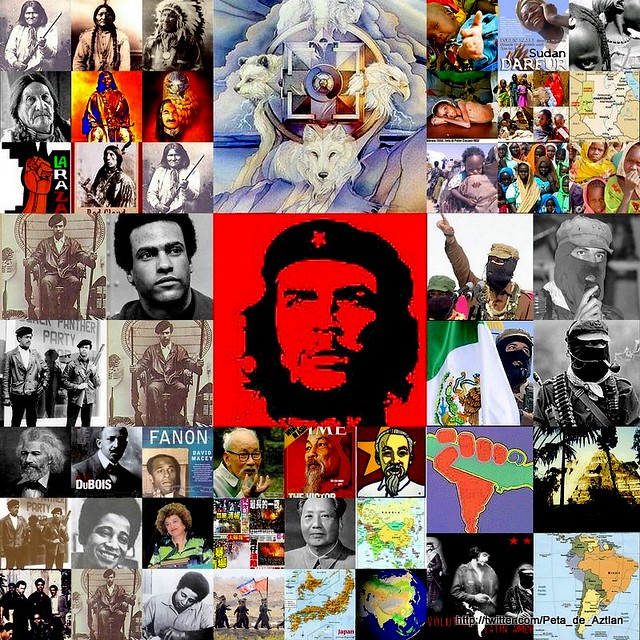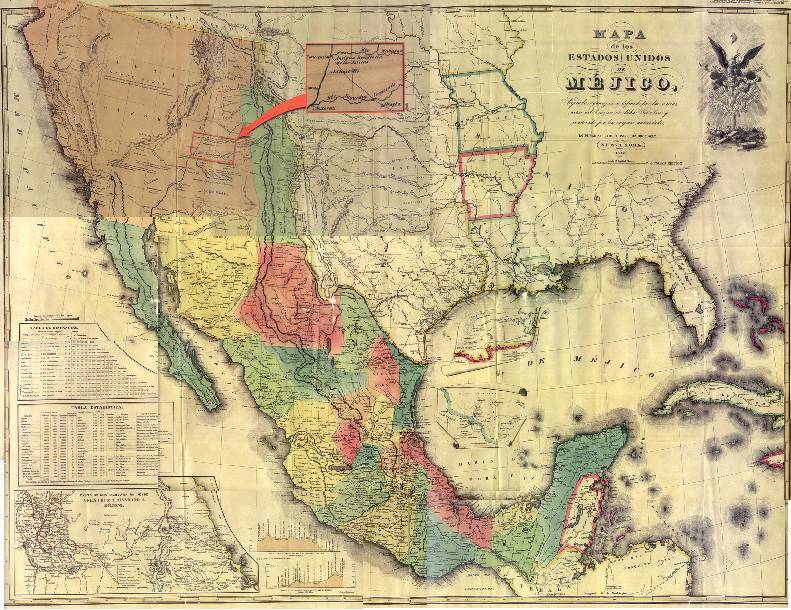+++++++++++++++++++++++++
Venceremos! We Will Win! Educate to Liberate!
Peter S. Lopez AKA @Peta_de_Aztlan
Sacramento, California
c/s
Venceremos! We Will Win! Educate to Liberate!
Peter S. Lopez AKA @Peta_de_Aztlan
Sacramento, California
c/s
----- Forwarded Message -----
From: "@Peta_de_Aztlan" <peta.aztlan@gmail.com>
To: peter.lopez51@yahoo.com
Sent: Saturday, September 15, 2012 9:12 AM
Subject: [HELP-Matrix Blog] What is the meaning of the word Aztlán? VIA @Peta_de_Aztlan
http://www.mexica.net/aztlan.php
++++
++++
http://www.mexica.net/aztlan.php
What is the meaning of the word Aztlán?
Aztlan is the mythical place of origin of the Aztec peoples. In their language (Nahuatl), the roots of Aztlan are the two words: aztatl tlan(tli) meaning "heron" and "place of," respectively. 'Tlantli' proper means tooth, and as a characteristic of a good tooth is that it is firmly rooted in place, and does not move, the prefix of this word is commonly used in Nahuatl to denote settlements, or place names, e.g. Mazatlan (place of deer), Papalotlan (place of butterflies) or Tepoztlan (place of metal). The Nahuatl language is often said to include three levels of meaning for its words or expressions: literal, syncretic and connotative. The connotative meaning of Aztlan, due to the plumage of herons, is "Place of Whiteness." The mythical descriptions of Aztlan would have it to be an island.
You would replace -tlan with -tecatl to identify a resident or person from the given place. So, for the examples above, we have that people from Mazatlan would be Mazatecatl, someone from Tepoztlan a Tepoztecatl, and someone from Aztlan an Aztecatl.
In the origin myths of the Aztecs, they emerged originally from the bowels of the earth through seven caves (Chicomostoc) and settled in Aztlan, from which they subsequently undertook a migration southward in search of a sign that would indicate that they should settle once more. This myth roughly coincides with the known history of the Aztecs as a barbarous horde that migrated from present-day northwestern Mexico into the central plateau sometime toward the end of the first millennium AD, when high civilizations of great antiquity were already well established in the region. It is known that the Aztecs had a sector ("barrio") in the Toltec city of Tollan, and the cultural influence of the Toltecs on the rough-edged Aztecs was subsequently to be very marked. On the view of some scholars (e.g., Nigel Davies), all of Aztec cultural development was an effort to recreate the grandeur that they knew at Tollan.
The exact physical location of Aztlan is unknown, other than it must have been located near estuaries or on the coast of northwestern Mexico, though some archaeologists have gone so far as to locate the present town of San Felipe Aztlan, Nayarit, as the exact place.
In Chicano folklore, Aztlan is often appropriated as the name for that portion of Mexico that was taken over by the United States after the Mexican-American War of 1846, on the belief that this greater area represents the point of parting of the Aztec migrations. In broad interpretation, there is some truth to this in the sense that all of the groups that would subsequently become the various Nahuatl-speaking peoples of central Mexico passed through this region in a prehistoric epoch, as attested by the existence of linguistically related groups of people distributed throughout the US Pacific Intermountain region, the US southwest and northern Mexico, known as the Uto-Aztecan-Tanoan group, and including such peoples as the Paiute, Shoshoni, Hopi, Pima, Yaqui, Tepehuan, Rarámuri (Tarahumara), Kiowas and Mayas.
++++
++++
http://www.colorado.edu/StudentGroups/MEChA/aztlan.html
What is the meaning of the word Aztlán
"There is a place that the Spirit of Truth has prepared so that it shall be from there from which will be born the Liberation of the Indigenous Peoples. It is called AZTLAN, which means Paradise; it is where the Spirit of Truth lives." -Yaqui Elder Rafael Guerrero, Coronel, Division del Norte de Pancho Villa
Aztlán is the mythical place of origin of the Aztec peoples. In their language (Nahuatl), the roots of Aztlán are the two words:
aztatl -tlan(tli)
meaning "heron" and "place of," respectively. 'Tlantli' proper means tooth, and as a characteristic of a good tooth is that it is firmly rooted in place, and does not move, the prefix of this word is commonly used in Nahuatl to denote settlements, or place names, e.g. Mazatlan (place of deer), Papalotlan (place of butterflies) or Tepoztlan (place of metal). The Nahuatl language is often said to include three levels of meaning for its words or expressions: literal, syncretic and connotative. The connotative meaning of Aztlán, due to the plumage of herons, is "Place of Whiteness." The mythical descriptions of Aztlán would have it to be an island.
You would replace -tlan with -tecatl to identify a resident or person from the given place. So, for the examples above, we have that people from Mazatlan would be Mazatecatl, someone from Tepoztlan a Tepoztecatl, and someone from Aztlán an Aztecatl.
In the origin myths of the Aztecs, they emerged originally from the bowels of the earth through seven caves (Chicomostoc) and settled in Aztlán, from which they subsequently undertook a migration southward in search of a sign that would indicate that they should settle once more. This myth roughly coincides with the known history of the Aztecs as a barbarous horde that migrated from present-day northwestern Mexico into the central plateu sometime toward the end of the first millenium AD, when high civilizations of great antiquity were already well established in the region. It is known that the Aztecs had a sector ("barrio") in the Toltec city of Tollan, and the cultural influence of the Toltecs on the rough-edged Aztecs was subsequently to be very marked. On the view of some scholars (e.g., Nigel Davies), all of Aztec cultural development was an effort to recreate the grandeur that they knew at Tollan.
The exact physical location of Aztlán is unkown, other than it must have been located near estuaries or on the coast of northwestern Mexico, though some archaeologists have gone so far as to locate the present town of San Felipe Aztlán, Nayarit, as the exact place.
In Chicana/o folklore, Aztlán is often appropriated as the name for that portion of Mexico that was taken over by the United States after the Mexican-American War of 1846, on the belief that this greater area represents the point of parting of the Aztec migrations. In broad interpretation, there is some truth to this in the sense that all of the groups that would subsequently become the various Nahuatl-speaking peoples of central Mexico passed through this region in a prehistoric epoch, as attested by the existance of linguistically related groups of people distributed throughout the U.S. Pacific Intermontane region, the U.S. southwest and northern Mexico, known as the Uto-Aztecan-Tanoan group, and including such peoples as the Paiute, Shoshoni, Hopi, Pima, Yaqui, Tepehuan, Rara'muri (Tarahumara), Kiowas and Mayos.
++++
Comment: As a Chicano de Aztlán I AM a descendant of the original indigenous peoples of these lands called the United States of America, I believe we have the right to call these lands whatever we want. Definitely more than the Europeans who first labeled it. Research the origin of the term America. Que Viva Aztlán! ~Che Peta
++++++++++++++++++++++++++++++++++++++++
HELP-Matrix Humane-Liberation-Party Blog ~ http://help-matrix.blogspot.com/ ~
Humane-Liberation-Party Portal ~ http://help-matrix.ning.com/ ~
@Peta_de_Aztlan Blog ~ http://peta-de-aztlan.blogspot.com/ ~ @Peta_de_Aztlan
+++++++++++++++++++++++++++++++++++++++++

--
Posted By @Peta_de_Aztlan to HELP-Matrix Blog at 9/15/2012 09:12:00 AM



No comments:
Post a Comment